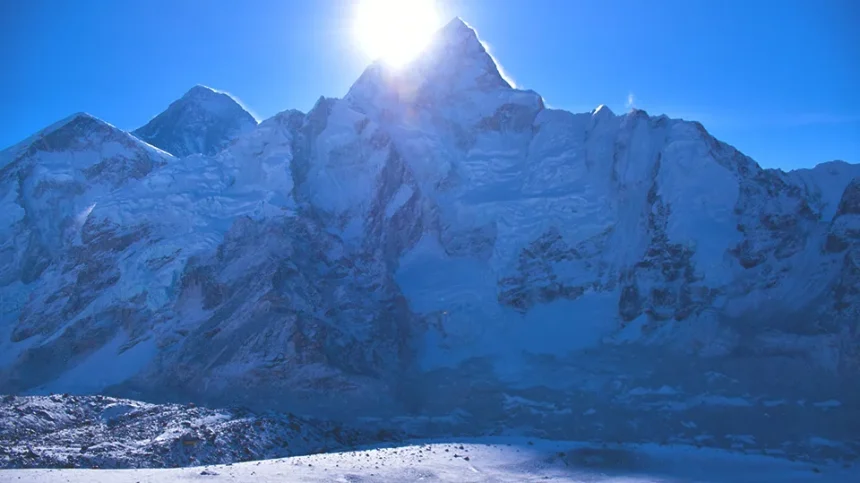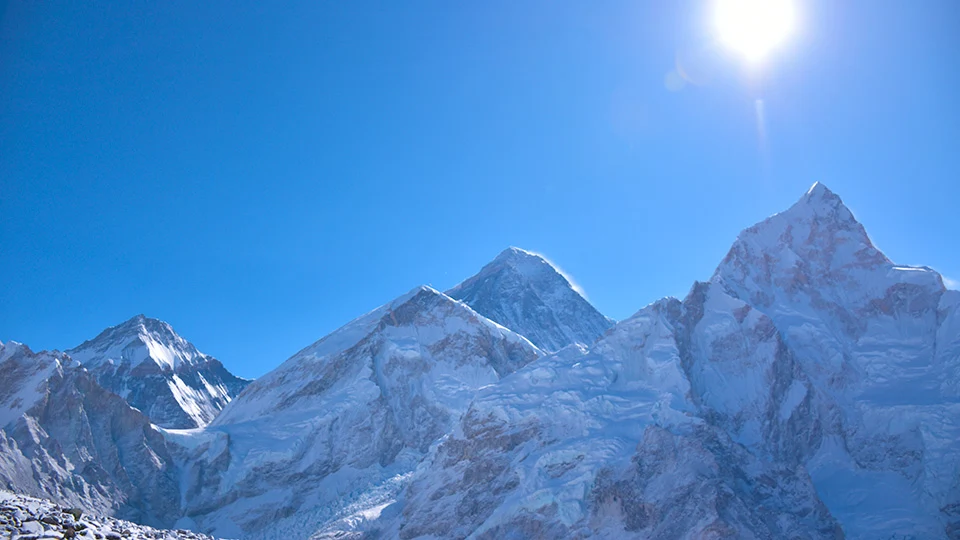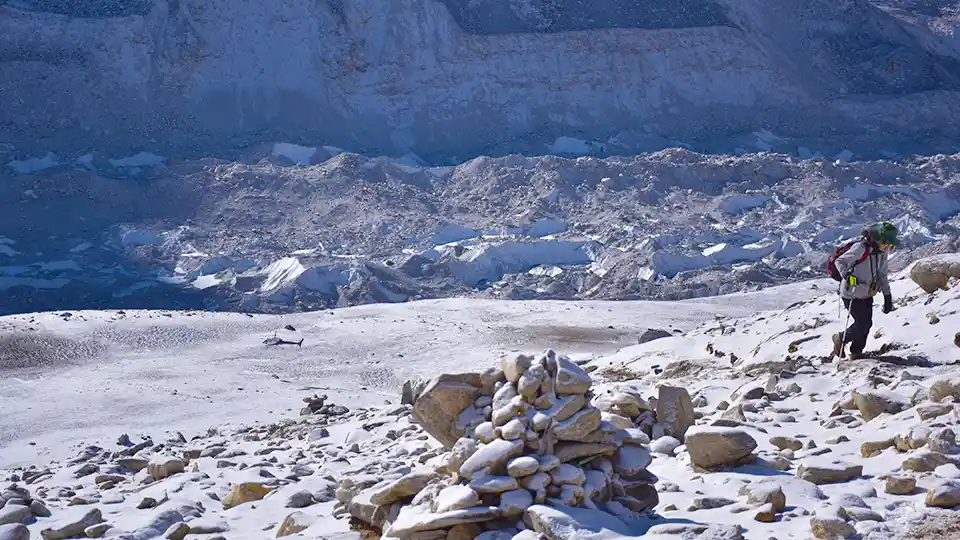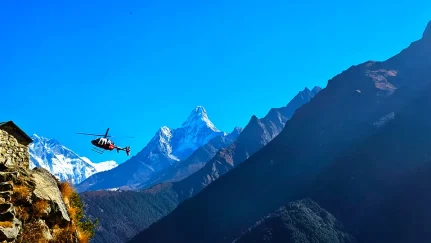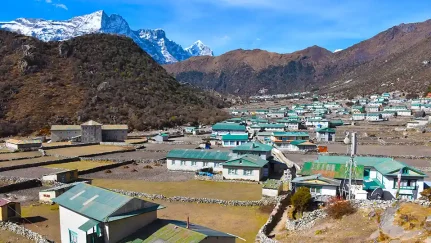Everest is the tallest mountain in the world and we all know that. Therefore, just because of this single fact, it attracts thousands of trekkers from around the world. But, have you ever wondered that besides this one major fact, there may be other unique facts about Mount Everest that people are unaware of?
We want to say yes, there are many facts about Everest that most people are unaware of and unheard of. Especially, most of the facts about Mount Everest are based on the adventure, stories, and natural phenomenons.
So, If you are looking to know some new facts about Mount Everest that are based on adventures and true stories, then you have come to the right place. Here in this blog, we have put together a list of 24 interesting and fun facts about Mount Everest. Hence, with the Knowledge of these facts about Mount Everest, we think that it will help you in your future endeavors of Mount Everest. So without wasting any time, let’s get started-
Facts about Mount Everest
1. Geological Formation
Mount Everest was formed approximately 60 million years ago due to the collision between the Indian and Eurasian tectonic plates. The high peaks of the Himalayas were formed by the ocean floor being forced upward by tectonic action.
- Wide angle view of Mount Everest Range
Thus, the marine limestone that makes up Everest’s top suggests that it was formerly a part of the ocean floor. Moreover, as a result of continued tectonic movements, the mountain continues to rise at a rate of around 4 millimeters each year.
2. The Height Debate
Over the years, there has been discussion regarding Mount Everest’s height. The Great Trigonometric Survey of India made the first precise measurement in 1856 and found that the height was 8,840 meters (29,002 ft).
However, in the Later measurements, the data have shown a little variation. The latest, announced jointly in 2020 by China and Nepal, declared 8,848.86 meters (29,031.7 feet) as the new official height. Unlike other prior measurements that just took into account the rock height, this particular measurement also considered the snow top on the summit.
3. Climate and Weather Conditions
One of the bitter facts about Mount Everest is that it is harsh and unforgiving when it comes to climate and weather. Temperatures at the summit can drop to as low as -60°C (-76°F) in the winter. The mountain is also subject to powerful winds that can exceed 200 mph (322 km/h). Hence, the conditions will be extremely challenging, with sudden storms posing significant risks to climbers.
4. The Khumbu Icefall
The Khumbu Icefall is one of the riskiest parts of the Everest climb route. The Icefall is a continually moving maze of ice seracs and crevasses that is situated near the head of the Khumbu Glacier.
- Khumbu Glacier from Everest base camp
Because of the increased risk of avalanches and icefall during the day due to glacier movement and melting, climbers have to tackle this dangerous stretch early in the morning when the ice is more stable. Climbers on the Southeast Ridge route still face a major obstacle in the form of the Khumbu Icefall, which has claimed many lives.
5. Cultural Significance
For the local people, Mount Everest has tremendous cultural and spiritual significance. The mountain is honored in Tibetan Buddhism as the home of the goddess of endless giving, Miyolangsangma. The peak is also extremely sacred for the Sherpa people, who call it “Chomolungma,” or “Goddess Mother of the World.”
Before beginning their ascent, climbers are frequently obliged to take part in a customary Buddhist ceremony called a “puja” in order to obtain the mountain’s blessing and guarantee a safe ascent.
6. Everest in Popular Culture
Countless novels, documentaries, and movies have been inspired by Mount Everest, and it has left a lasting mark on popular culture.
The event of 1996 was notably documented in Jon Krakauer’s book “Into Thin Air” and subsequently turned into a motion picture. In this storm incident, a total of eight climbers lost their lives.
Furthermore, many documentaries have also been made on Everest, showing the tragedies as well as the victories of climbers. Hence, the attraction and reach of this famous peak are maintained by its portrayal in popular culture, which brings fresh generations of adventurers to its slopes.
7. The Economics of Everest
Aside from the emotional and physical challenges, one of the facts about Everest is that climbing the summit may present financial difficulties to climbers. An expedition may cost anything from $30,000 to $100,000 or more, depending on the services and degree of assistance provided. Permits, gear, guides, and logistical support are all included in these prices.
Everest tourism has a major economic influence on Nepal, giving local populations jobs and revenue. However, it also calls into question the commercialization of one of the most respected natural wonders in the world, as well as problems with accessibility.
8. Death zone in Everest
At elevations over 26,247 feet (8,000 meters), there is a “death zone” on Mount Everest, where the air pressure is so low that supplementary oxygen is necessary for human survival.
It’s known as the “death zone” since this is where the greatest number of fatalities have happened. Hence, it is among the hardest places on the mountain to cross due to conditions including strong winds, intense cold, low oxygen levels, and more. Many climbers have lost their lives here not only trying to reach the summit but also on the way down.
Interesting Facts about Mount Everest
9. Kami Rita Sherpa holds the record for the 30 successful summits to Everest
By climbing Mount Everest for the 30th time, Kami Rita Sherpa broke his world record on May 22, 2024. The successful 30th ascent of Kami Rita to Mount Everest has just been certified by Khimlal Gautam, chief of the Expedition Monitoring and Facilitation Field Office.
The Solu Khumbu Pasang Lhamu Rural Municipality’s Thame village is where Kami Rita Sherpa was born. He reached the top of Mount Everest for the first time on May 13, 1994, and he’s still going strong, setting new records.
10. Both China And Nepal can claim Mount Everest
China and Nepal share a boundary with the summit of Mount Everest. China owns the northern side, and Nepal owns the southern. Being one of the world’s coolest borders, it might be fascinating for both of the countries as they include Mount Everest.
The South Col route and the North Col route are the two main routes for climbing Mount Everest. Although there are additional options, these are the routes that are frequently used.
The South Col route is simpler than the North Col route, which is somewhat longer and more difficult. But, if one wishes, he/she can therefore reach the summit of the North Col route from Tibet and the South Col route from Nepal.
11. Dead Bodies Are Common sights on Mount Everest
The bodies of climbers who pass away while climbing Everest are left on the top. Because of the icy terrain, burying a dead person is nearly difficult. It takes greater physical effort and results in oxygen shortage when dead bodies are dragged or carried. So for that reason, it is not uncommon to see dead bodies on Mount Everest.
It is estimated that Mount Everest still holds more than 200 dead bodies. Regarding the exact number, nobody is certain yet. Of those who have died, almost 2/3 of the bodies are still lying in peace. On average the rescue of a dead body in Everest costs above 50,000 dollars.
Therefore, if you plan to climb Everest, you will undoubtedly come across several corpses along the way. There are also a few well-known bodies. “Green boots” is among the most well-known pictures. Later on, it was discovered that he was an Indian citizen named Tsewang Paljor.
12. How Much Time Does It Take to Climb Everest?
Climbing the summit of Everest is not a typical adventure. It can take up to two months or ten weeks to successfully reach the summit and descend. Acclimatization is the process of adjusting your body to higher elevations during all those periods. Additionally, waiting for favorable weather might require additional time.
One fascinating detail – Pemba Dorje Sherpa set a world record for the fastest ascent on top of the world on May 21, 2004. He ascended Mount Everest in 8 hours and 10 minutes.
13. Helicopter lands on the summit of Everest
On May 14, 2005, French helicopter pilot Didier Delsalle created history when he successfully landed his Eurocopter AS350 B3 on the top of Mount Everest. Multiple cameras and other equipment recorded the flight and the landing on the peak, helping to verify the record. After three minutes and fifty seconds of landing time, Delsalle then descended and landed back at Tenzing-Hillary Airport in Lukla, Nepal.
To further demonstrate that the day before had not been pure luck, Delsalle recreated the Everest summit landing on May 15, 2005. Even though the second day’s conditions were even more challenging, Delsalle decided not to wait any longer to catch the few favorable weather windows in May that would have allowed ‘traditional’ climbers to reach the summit of Everest.
14. A Ton of Human Waste Is Freezing Atop Mount Everest
It is believed by the Cleaner Everest effort that approximately 8,000 kg of human waste remains on Mount Everest. Therefore, it is raising severe concerns about environmental and health issues. When at a higher, freezing altitude, Human wastes do not decay.
Carrying excrement from humans off the mountain is now a must for mountaineers. Even after the rule was implemented, there are still issues with the system. A few porters and Sherpas have said that the severe weather, altitude, and steep inclines made it impossible for them to carry the additional weight of garbage.
15. The Rule of Two O’Clock on Mount Everest
For climbers aiming to reach the top of Mount Everest, there is a widely recognized turnaround time known as the “Two O’Clock Rule.” Climbers are required by rule to return by 2:00 pm, regardless of how far they have come toward the top.
This regulation was put in place to make sure climbers had enough time to go down safely before evening, as falling in the dark raises the possibility of accidents and frostbite. Additionally, it helps climbers avoid being trapped in the notorious late-afternoon high-altitude storms.
16. Traffic Jam in Mount Everest
This year’s first traffic bottleneck of the Mount Everest expedition occurred on May 22. Approximately 200 climbers formed a line to climb to the summit above Base Camp IV.
A minimum of two hours were required for the climbers caught in this lengthy Everest traffic jam to wait for their turn to reach the summit. Unfortunately, a number of climbers passed away in the line due to fatigue and prolonged waiting. This is one of the most recent facts about Mount Everest, although it is a tragic one.
17 Rainbow Valley of Mount Everest
Among the fascinating facts of Mount Everest is the Rainbow Valley. A portion of the summit is known as Everest Rainbow Valley, which is home to the corpses of climbers who lost their lives while ascending the mountain. Given the white and grey tones of the mountain, the region is called Mount Everest Rainbow Valley because of its very colorful landscape. The colorful clothing that covers the dead climbers’ bodies is what gives Everest Rainbow Valley its colors.
Fun facts about Mount Everest
18. Climbers have wedded at the summit of Mount Everest
In May of 2005, Moni Mulepati and Pemba Dorjee Sherpa got married atop Mount Everest. The couple, who were both skilled climbers, decided to fulfill their long-held ambition of being married atop the highest peak in the world.
The couple had to deal with severe weather, altitude sickness, and technical issues while climbing to the summit, so the wedding was not without challenges. However, they continued, and at last, they arrived at the summit, where they exchanged vows in front of sherpas and other climbers.
All things considered, the first marriage ceremony atop Mount Everest was a profound and unique occasion that will live on in people’s memories for years to come.
19. Edmund Hillary and Tenzing Norgay might not have been the first people to summit Mount Everest
On May 29, 1953, New Zealander Sir Edmund Hillary and Tenzing Norgay Sherpa from Nepal accomplished the first successful summit of Mount Everest. However, some people believe that the peak of Mount Everest was reached before them by the earlier climbers.
Climbers In 1924, George Mallory and Andrew Irvine attempted to reach the top of Mount Everest. They were last observed on July 8 of that year, moving upward and just below the peak. Then, both of them vanished from sight after that, and it is uncertain that if they reached the summit or not.
20. The tallest peak on Earth isn’t exactly Mount Everest
With a height of 10,200 meters, Mauna Kea is the highest peak on Earth. However, the majority of the land of Mauna Kea lies below sea level. For that reason, Mount Everest is considered the highest peak on Earth above sea level.
21. The Name of Mount Everest Was Inspired by an Englishman
George Everest, the director of the government Survey of India from 1830 to 1843, is honored by the name Mount Everest. He was the first to gather a team and measure the Himalayan Mountains. For this reason, we now refer to it as “Mount Everest”.
22. Planes Are Able to Fly Above Everest
Yes! The plane can fly over Mount Everest. Today’s aircraft can take flight at an altitude of 8,000 to 10,000 meters. Most commercial airplanes have a certified maximum elevation of 12,000 meters to 13,000 meters.
It is not a huge difficulty to fly above Mount Everest, but aviation paths do not pass through the mountain. Moreover, there is a very high risk of turbulence in the aircraft due to the unpredictability of the weather in the Mount Everest region. The primary causes of Everest’s no-fly zone are the Snowstorms and hurricane-force winds that leave no room for the flights near Everest.
23. People started climbing Mount Everest in 1922
In 1922, Captain Geoffrey Bruce and George Finch made the first ascent of Mount Everest. With oxygen, the two climbed to 8,320 m, just 527.82 m below the summit. Since then, thousands of people have attempted to conquer the Everest.
24. A portion of the film “Everest” was shot on Mount Everest
The 1996 mountain disaster is a true story that is portrayed in the film “Everest”. A portion of the action was shot at an elevation of 4,750 meters in the Everest region, which is not too far from the EBC. Aside from that, the majority of the other scenes were recorded in studios.

